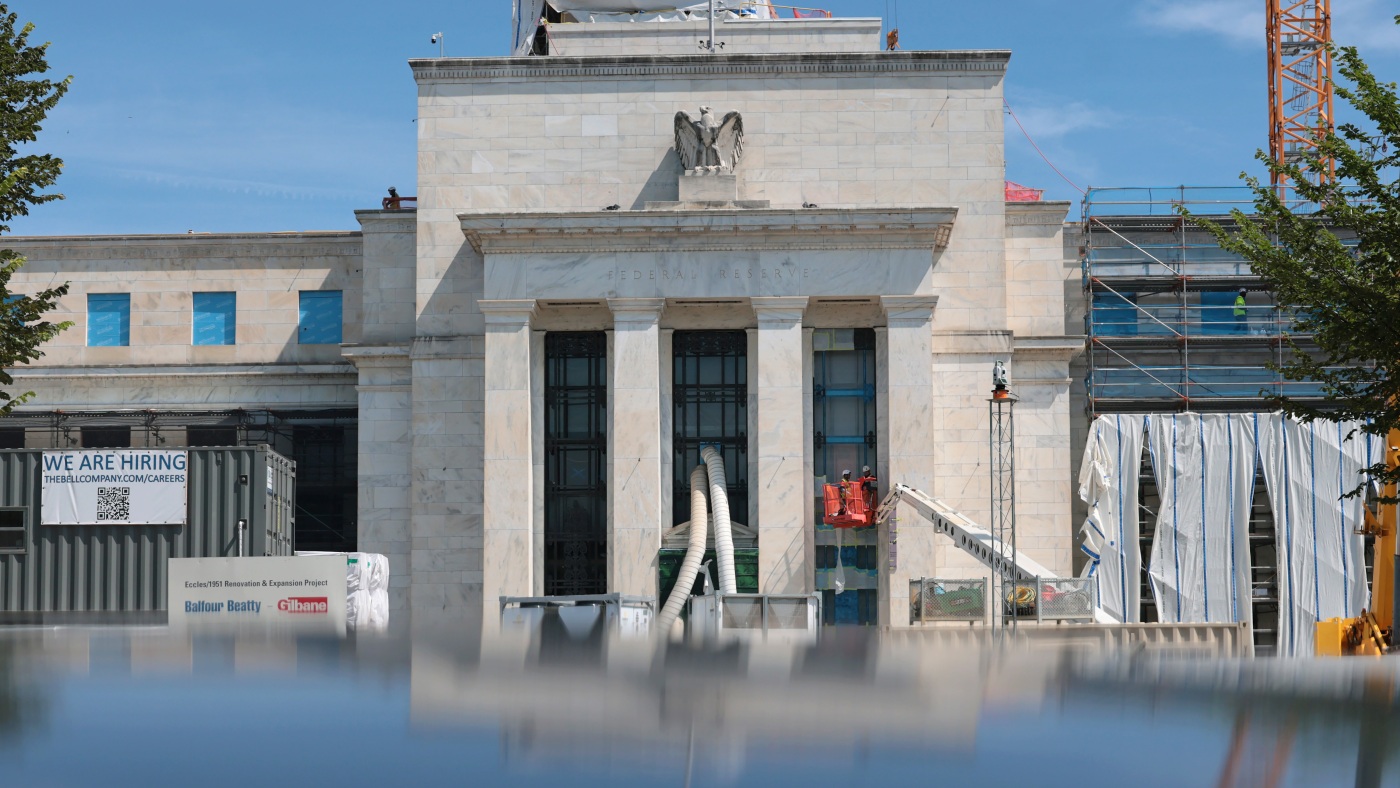The Renovation Rumble: Trump, Powell, and the Fed’s Fiscal Facelift
Introduction: A Clash of Titans
The intersection of politics and economics often produces dramatic moments, but few have been as peculiar as the recent encounter between former President Donald Trump and Federal Reserve Chair Jerome Powell. What began as a routine inspection of the Fed’s ongoing renovations quickly escalated into a public display of tension, revealing deeper fissures in the relationship between the executive branch and the central bank. This encounter was not just about bricks and mortar; it was a microcosm of the broader struggle between political expediency and economic independence.
The Backstory: A President and His Fed
Trump’s tenure was marked by an unusual level of interference in the Federal Reserve’s affairs. Breaking with long-standing tradition, Trump repeatedly criticized the Fed’s monetary policy, particularly its interest rate decisions. His public attacks on Powell were unprecedented, raising concerns about the Fed’s independence—a cornerstone of U.S. economic stability. The Fed’s autonomy is designed to shield monetary policy from short-term political pressures, allowing it to focus on long-term goals like price stability and full employment. Trump’s actions, however, threatened to blur these lines, creating a precarious situation where political considerations could overshadow economic realities.
The Renovation Inspection: A Pretext for Conflict
The official reason for Trump’s visit was to inspect the ongoing renovations at the Federal Reserve headquarters. On the surface, this seemed like a mundane task, but it quickly became a stage for Trump to air his grievances. The renovations, which had seen cost overruns, became a symbol of what Trump perceived as wasteful spending and mismanagement within the Fed. By focusing on the financial aspects of the project, Trump shifted the narrative away from complex monetary policy debates to a more relatable issue: taxpayer dollars and government spending. This tactic was a masterstroke of political maneuvering, allowing Trump to criticize Powell without directly addressing the Fed’s monetary decisions.
The Tussle: A Clash of Styles and Philosophies
The disagreement between Trump and Powell over the renovation costs was more than just a spat about money. It was a clash of styles and economic philosophies. Trump, with his business background, likely viewed the cost overruns as a sign of incompetence and a failure to control spending. Powell, on the other hand, defended the renovations as necessary for the long-term functionality and security of the Federal Reserve. This difference in perspective highlighted the broader debate about the role of government spending. Trump, while advocating for tax cuts, also expressed concerns about government debt and fiscal responsibility. Powell, focused on monetary policy, understood that fiscal policy also has an impact on the economy. The exchange over the renovation costs provided a public forum for these contrasting views, even if the specific issue was relatively small in the grand scheme of things.
The Implications: Independence Under Pressure
Trump’s visit and his public disagreement with Powell sent a chilling message about the independence of the Federal Reserve. The President’s willingness to directly criticize the Fed Chair, even on a seemingly trivial matter, undermined the credibility of the central bank and raised concerns about political interference in monetary policy. This pressure, whether intentional or not, created a climate of uncertainty and could potentially influence the Fed’s decisions in the future. The independence of the Federal Reserve is crucial for maintaining price stability and fostering sustainable economic growth. When political considerations overshadow economic realities, the long-term health of the economy can be compromised.
The visit also served as a powerful reminder of the importance of transparency and accountability within the Federal Reserve. While the Fed operates with a degree of independence, it is still accountable to the public and must justify its decisions, including spending on renovations. The public scrutiny generated by Trump’s visit could potentially lead to greater oversight and a more transparent process for managing the Fed’s finances.
The Aftermath: Lingering Questions and Future Challenges
The immediate aftermath of the visit saw a flurry of media coverage and renewed debate about the proper relationship between the President and the Federal Reserve. While the specific issue of the renovation costs may fade from public attention, the underlying tensions between the executive branch and the central bank remain. Future presidents may be tempted to exert similar pressure on the Fed, particularly during times of economic uncertainty or political pressure.
The long-term implications of Trump’s actions on the Fed’s independence are still unfolding. It remains to be seen whether future Fed Chairs will be able to resist political pressure and maintain the integrity of monetary policy. The events serve as a valuable lesson about the importance of defending the independence of the Federal Reserve and ensuring that it can operate without undue political influence.
A Symbolic Showdown
Ultimately, Trump’s visit to the Federal Reserve and his tussle with Jerome Powell over renovation costs was more than just a disagreement about money. It was a symbolic showdown between the executive branch and the independent central bank, highlighting the ongoing tensions between political expediency and economic stability. The event served as a stark reminder of the importance of safeguarding the Fed’s independence and ensuring that monetary policy is guided by sound economic principles, not political pressures. The long-term consequences of this episode remain to be seen, but it undoubtedly leaves a mark on the history of the Federal Reserve and its relationship with the U.S. government.


